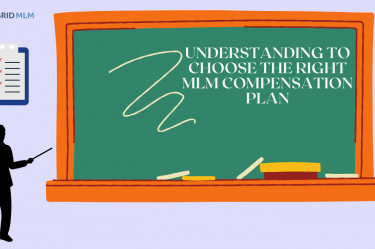With the prevalence of various MLM Commission Structures, multi-level marketing trends enable millions of worldwide distributors to realize their dream of financial independence.
MLM commission systems come in a variety of forms in compensation plans. As they reach critical milestones along the network marketing ladder, the marketers receive them at various stages.
Here, leading MLM businesses offer some examples of common commission schemes.
- Sponsor Bonus
- Matching Bonus
- Level Commission
- Pairing Bonus
Owners of MLM businesses use MLM Software equipped with several MLM commission structures according to their business needs. We will go into great detail about the various MLM Commission Systems in this blog.
How do MLM Commission Systems work?
MLMs promise to recompense their distributors or members through a framework called an MLM commission structure, where various compensation plans define the earnings potential.
Even though these arrangements differ from one business to the next, similarly they often entail multiple levels of commissions, with larger payments made to those who increase their sales or acquire more distributors.
Best MLM Commission Structures and Compensation Plan
The finest MLM compensation structures are those that provide each member a reason to put in extra effort and expand their company, thereby fostering growth and success.
The majority of people opt to join MLMs with straightforward compensation structures that are simple to comprehend; consequently, members are aware of their potential earnings. The majority of businesses use a few standard MLM commission structure types.
1. Sponsor/Introducer Bonus:
If MLM distributors or members add new people to the network as their downline, they will receive a sponsor bonus. This bonus, often called a referral bonus, is determined using the company’s established rate.
Example: A encouraged B to join their MLM company’s distributor network. A can add B to their downline and will receive a sponsor bonus.
2. Matching Bonus:
A member’s uplines who sponsored or helped him join the network receive a portion of the pairing bonus as a matching bonus.
Eg: X supports Y. An organization provides a 15% matching bonus. His sponsor X will receive a 15% bonus on whatever commissions distributor Y earns from sales or other commissions.
3. Level Commission:
When individuals in a member’s or distributor’s downline earn a commission from making sales, the member or distributor receives a level commission.
Based on the rank or level of each upline member’s position, they receive a portion of this commission. This benefit continues to level n.
4. Pairing Bonus:
Only when a member’s or distributor’s left and right Personal Volumes (PV) match, do they become eligible for a pairing bonus, also known as a binary bonus.
The sales of the downline members determine this incentive. Most MLMs cap the maximum pairing incentive they offer.
The only MLM compensation plan that uses matching bonuses is the Binary MLM Compensation Plan.
5. Fast Start Bonus:
A rapid start bonus is given to new members to increase their interest in the MLM industry. On a new member’s first sale, the Quick Start bonus takes the shape of a higher-than-average sales commission.
Eg: According to the standard plan, a corporation may give its members a 5% commission; however, the rapid start bonus will raise those rates to 10%.
6. Generation Bonus:
Based on the predetermined proportion of commission or bonus that the corporation decides for each generation, a distributor or member will receive a Generation bonus. Such a bonus is determined by the sales that each generation generates.
Eg: Three generations are part of Member X’s MLM network. Sales from Generations 1, 2, and 3 total 200, 100, and 300 dollars, respectively. In this scenario, X will pay a generation bonus of 30% of 200 + 20% of 100 + 10% of 300 if the predefined rate for Generation 1 is 30%, Generation 2 is 20%, and Generation 3 is 30%.
7. Position Bonus:
As the downline team members bring in new recruits and join the matrix, the member of a matrix MLM plan receives a position bonus.
Eg: An illustration would be a 3*3 matrix. When a new member joins his third down level, therefore, the member becomes eligible to receive a position bonus. The company’s policies may change the position bonus percentage.
8. Roll-up or compression Bonus:
A distributor who has a member in his downline who is underperforming receives a compression or roll-up bonus.
Such members will be promoted or rolled up to a higher level, and a larger commission will be paid, to make up for the salary disparity. Employees who work for an organization with a sizable network and membership are compensated in this manner.
9. Forced Matrix Bonus:
The distributors receive additional remuneration in the form of a Forced Matrix Bonus. Once the members successfully fill their matrix with downline members, following the predetermined matrix size, they will qualify for this incentive.
10. Party Bonus:
When a member organizes a party with the intention of promoting MLM products or expanding networks, they become eligible for a Party Bonus. Additionally, the member can reap extra rewards for their dedicated efforts.
Conclusion:
The most prevalent bonuses that are offered in the main MLM Compensation Plans have been covered in this blog. In the real world, corporations adjust their bonuses in accordance with their business.




